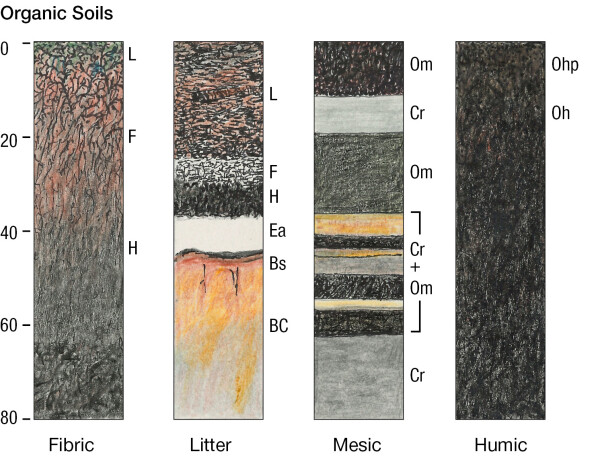Organic Soils are formed in the partly decomposed remains of wetland plants (peat) or forest litter. Some mineral material may be present but the soil is dominated by organic matter.
Organic Soils occur in wetlands in most parts of New Zealand, or under forests that produce acid litter in areas with high precipitation. They cover 1% of New Zealand.
Organic Soils have very low bulk densities, low bearing strength, high shrinkage potential when dried, very low thermal conductivity and high total available-water capacity.
Organic Soils have high cation exchange capacities, are usually strongly or extremely acid, and nutrient deficiencies are common.
High carbon/nitrogen ratios indicate slow decomposition rates. Many soil organisms are restricted because of anaerobic conditions.
Soil orders are divided into soil groups based on variation in factors such as drainage status, parent material, chemical and physical properties:
